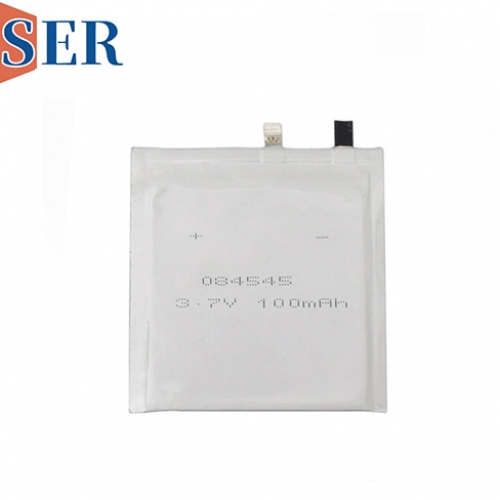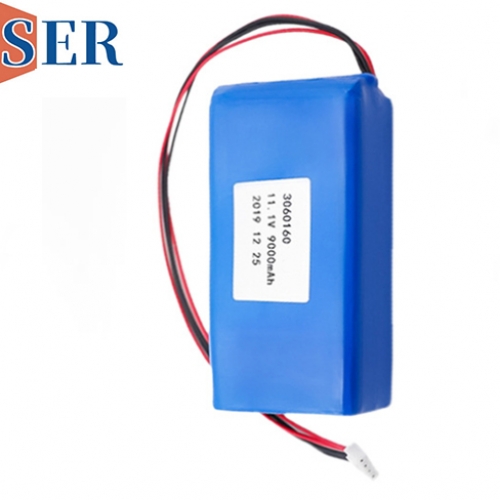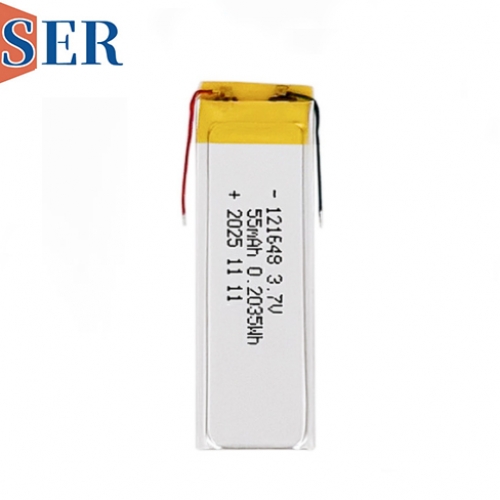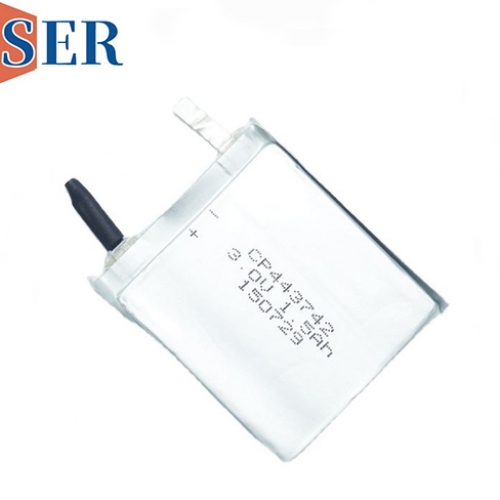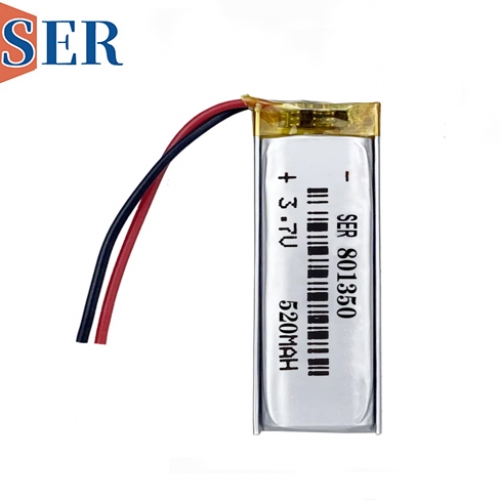LP903157 LiPo Battery with MSDS and UN38.3
LP903157 LiPo Battery with MSDS and UN38.3
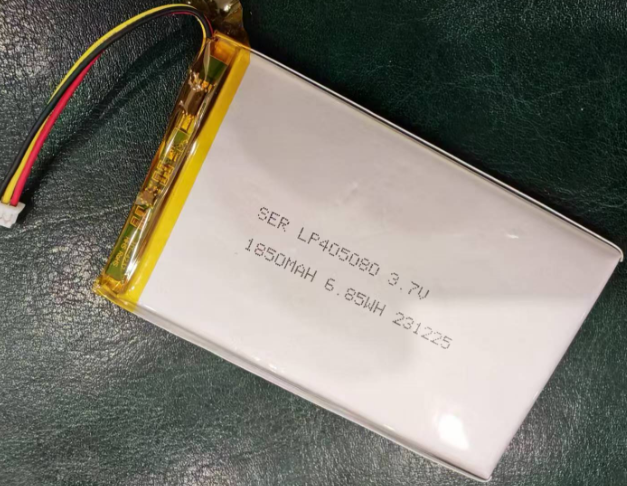
Abstract
The LP903157 lithium-polymer (LiPo) battery, with dimensions of 9*31*57mm, 3.7V nominal voltage, and 1900mAh capacity, is a compact and versatile power source widely used in various portable electronic devices. This article provides an in-depth examination of the lithium polymer battery's key features, including its physical specifications, safety certifications, and built-in protection mechanisms. A particular focus is placed on the swelling rate phenomenon, a common challenge in LiPo battery technology, detailing its typical progression over the battery's lifecycle, influencing factors, and implications for product design and end-user experience.
1. Introduction
In the era of portable electronics, the demand for high-performance, compact, and safe rechargeable batteries has never been greater. Lithium-polymer (LiPo) batteries have emerged as a leading solution, offering a favorable combination of energy density, flexibility in form factor, and relatively low self-discharge rates. Among them, the LP903157 model stands out for its specific dimensions tailored to fit a variety of device designs while delivering reliable power. However, like all LiPo batteries, it is subject to certain operational characteristics, one of the most notable being the swelling rate, which can impact both performance and longevity. This article aims to dissect the LP903157's attributes and delve into the intricacies of its swelling behavior, providing valuable insights for manufacturers, engineers, and consumers alike.
2. Physical and Electrical Specifications
2.1 Dimensions and Form Factor
The LP903157 Lipo battery measures 9mm in thickness, 31mm in width, and 57mm in length. This slim and elongated profile makes it suitable for integration into devices where space is at a premium, such as wearable technology, slim remote controls, or compact medical devices. The polymer casing allows for a more flexible and lighter design compared to traditional cylindrical lithium-ion cells, enabling manufacturers to optimize the internal layout of their products.
2.2 Electrical Characteristics
Nominal Voltage: The battery operates at a nominal voltage of 3.7V, which is standard for LiPo chemistry. This voltage level is compatible with a wide range of electronic circuits and power management systems.
Capacity: With a capacity of 1900mAh, the LP903157 can provide sufficient energy to power devices for extended periods, depending on their power consumption. For instance, in a low-power application like a fitness tracker, it could potentially last several days on a single charge.
Energy Density: LiPo batteries are known for their high energy density, and the LP903157 is no exception. It stores a relatively large amount of energy in a small volume, making it an efficient choice for portable devices where weight and size are critical factors.
3. Safety Certifications and Documentation
3.1 MSDS (Material Safety Data Sheet)
The availability of an MSDS for the LP903157 battery is a crucial aspect of its safety profile. The MSDS provides detailed information about the chemical composition of the battery, including the materials used in the electrodes, electrolyte, and casing. It also outlines potential health and safety hazards associated with the battery, such as the risk of fire or explosion if mishandled, as well as proper storage, handling, and disposal procedures. This documentation is essential for ensuring the safe use of the battery in various environments and for complying with regulatory requirements.
3.2 UN38.3 Certification
UN38.3 is a widely recognized international standard for the safe transport of lithium batteries. It involves a series of rigorous tests, including altitude simulation, thermal test, vibration, shock, external short circuit, impact, and overcharge tests, among others. The fact that the LP903157 battery has obtained UN38.3 certification indicates that it has undergone and passed these tests, demonstrating its ability to withstand the rigors of transportation without posing a significant safety risk. This certification is particularly important for manufacturers and distributors who need to ship the batteries globally, as it ensures compliance with international transportation regulations.
4. Built-in Protection Mechanisms: PCM Board
4.1 Overview of PCM (Protection Circuit Module)
The LP903157 battery is equipped with a PCM board, which plays a vital role in ensuring the safe and reliable operation of the battery. The PCM is an electronic circuit that monitors and controls various parameters of the battery to prevent overcharging, over-discharging, and over-current conditions, which could otherwise lead to battery damage, reduced lifespan, or even safety hazards such as fire or explosion.
4.2 Overcharge Protection
Overcharging a LiPo battery can cause the electrolyte to decompose, generating gas and leading to swelling, as well as potentially damaging the battery's internal structure. The PCM board in the LP903157 battery monitors the battery voltage during charging. When the voltage reaches a pre-set upper limit (typically around 4.2V for a 3.7V LiPo battery), the PCM automatically cuts off the charging current, preventing further voltage increase and protecting the battery from overcharge damage.
4.3 Over-discharge Protection
Similarly, over-discharging a LiPo battery can also have detrimental effects, such as causing the copper electrodes to dissolve and form dendrites, which can short-circuit the battery. The PCM board continuously monitors the battery voltage during discharge. When the voltage drops to a pre-set lower limit (usually around 2.5-3.0V), the PCM disconnects the battery from the load, preventing over-discharge and extending the battery's lifespan.
4.4 Over-current Protection
Excessive current flow through the battery can generate excessive heat, which can damage the battery's internal components and reduce its performance. The PCM board incorporates current sensing elements to monitor the current flowing in and out of the battery. If the current exceeds a pre-defined threshold, the PCM will limit or cut off the current to protect the battery from over-current conditions.
5. Swelling Rate: A Comprehensive Analysis
5.1 Definition and Significance of Swelling Rate
Swelling rate in LiPo batteries refers to the increase in the battery's thickness over time and usage. It is a natural phenomenon that occurs due to various factors, including the decomposition of the electrolyte, the formation of gas within the battery, and the expansion of the electrode materials. The swelling rate is an important parameter to consider as excessive swelling can affect the battery's fit within the device, potentially causing mechanical stress on the device's components and leading to performance issues or even device failure.
5.2 Typical Swelling Rate Progression
Initial Stage (Before 300 Cycles): In the initial stage of the battery's lifecycle, before reaching 300 charge-discharge cycles, the swelling rate is relatively low. Normally, the maximum expansion position is at the center of the battery, and the swelling is typically 0-4% of the original thickness. This minimal swelling is often not noticeable and does not significantly impact the battery's performance or the device's functionality.
Intermediate Stage (300-400 Cycles): As the battery undergoes more charge-discharge cycles, between 300 and 400 cycles, the swelling rate increases slightly. Under normal operating conditions, the swelling can reach 4-6% of the original thickness. However, in hot working conditions for an extended period, the swelling rate may be slightly larger due to the accelerated chemical reactions and gas generation at higher temperatures.
Advanced Stage (After 400 Cycles): After 400 charge-discharge cycles, the rate of swelling tends to increase more rapidly. This is because the battery's internal components have undergone significant degradation over time, leading to more pronounced electrolyte decomposition and gas accumulation. The increased swelling can pose challenges for device designers, as it may require more space within the device to accommodate the expanding battery, or it may necessitate more frequent battery replacements.
5.3 Factors Influencing Swelling Rate
Temperature: Temperature is one of the most significant factors affecting the swelling rate of LiPo batteries. High temperatures accelerate the chemical reactions within the battery, leading to faster electrolyte decomposition and gas generation. This is why batteries tend to swell more in hot working conditions or when exposed to high ambient temperatures for extended periods.
Charge-Discharge Rate: The rate at which the battery is charged and discharged also impacts the swelling rate. High charge-discharge rates generate more heat within the battery, which can exacerbate the swelling phenomenon. Additionally, rapid charging and discharging can cause more mechanical stress on the battery's internal components, potentially leading to faster degradation and increased swelling.
Depth of Discharge (DoD): The depth to which the battery is discharged during each cycle also plays a role in swelling. Deeper discharges can cause more stress on the battery's electrodes and electrolyte, leading to increased gas generation and swelling over time. It is generally recommended to avoid deep discharges to extend the battery's lifespan and minimize swelling.
6. Implications for Product Design and End-User Experience
6.1 Product Design Considerations
Battery Compartment Design: Device designers need to take into account the potential swelling of the LP903157 battery when designing the battery compartment. Sufficient space should be allocated to accommodate the expected swelling over the battery's lifecycle, ensuring that the battery can expand without causing mechanical interference with other components in the device.
Thermal Management: Given the impact of temperature on the swelling rate, effective thermal management is crucial in device design. This can include the use of heat sinks, thermal pads, or ventilation systems to dissipate heat generated by the battery and other components, keeping the battery within a safe operating temperature range and minimizing swelling.
Battery Replacement Strategy: For devices where battery replacement is expected over time, designers should consider making the battery easily accessible and replaceable. This allows end-users to replace swollen batteries, ensuring the continued proper functioning of the device and preventing potential safety hazards.
6.2 End-User Experience
Device Performance: Excessive battery swelling can affect the device's performance by causing mechanical stress on components such as buttons, connectors, or displays. This can lead to issues such as malfunctioning buttons, poor electrical contact, or display distortion, degrading the overall user experience.
Safety Concerns: In extreme cases, severe battery swelling can pose safety risks, such as the battery case rupturing or the battery catching fire. While the PCM board and other safety features in the LP903157 battery help mitigate these risks, it is still important for end-users to be aware of the potential for swelling and to follow proper battery handling and charging guidelines.
7. Conclusion
The LP903157 LiPo battery offers a compelling combination of compact size, high capacity, and built-in safety features, making it a suitable choice for a wide range of portable electronic devices. Its MSDS and UN38.3 certifications ensure safe handling and transportation, while the PCM board provides essential protection against overcharging, over-discharging, and over-current conditions. However, the swelling rate phenomenon is an inherent characteristic of LiPo batteries that requires careful consideration in product design and end-user education. By understanding the typical progression of the swelling rate, the influencing factors, and the implications for device performance and safety, manufacturers and engineers can design more robust and reliable products, while end-users can enjoy a safer and more satisfactory experience with their devices powered by the LP903157 battery. As battery technology continues to evolve, ongoing research and development efforts are focused on reducing the swelling rate and improving the overall performance and lifespan of LiPo batteries, further enhancing their suitability for the ever-growing demand for portable power solutions.

